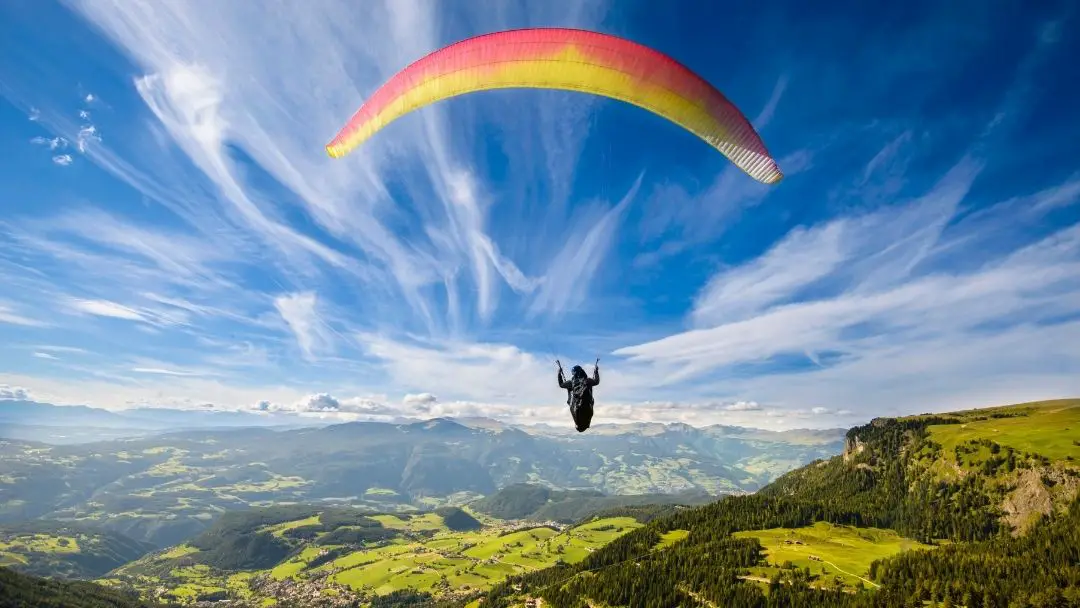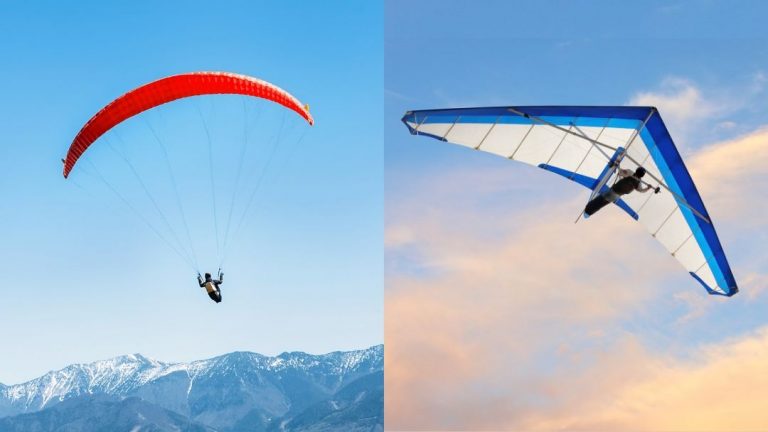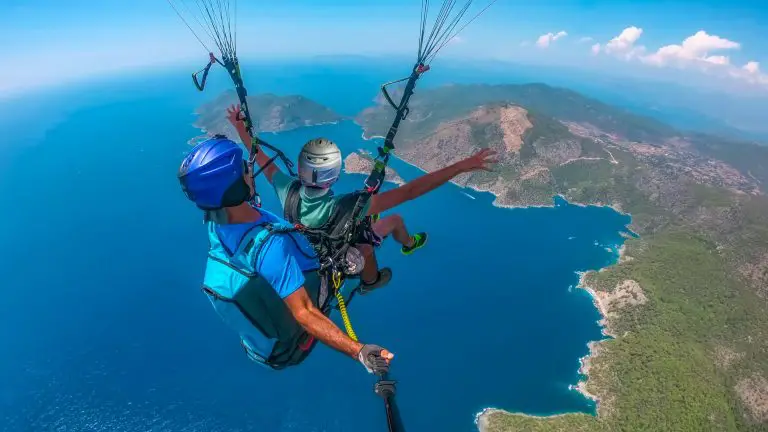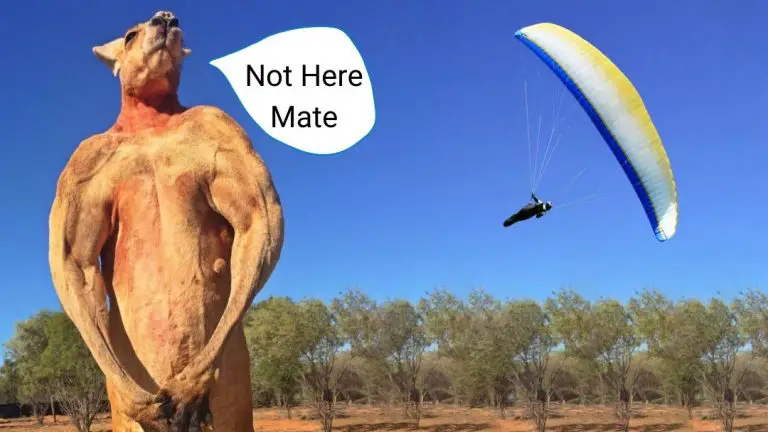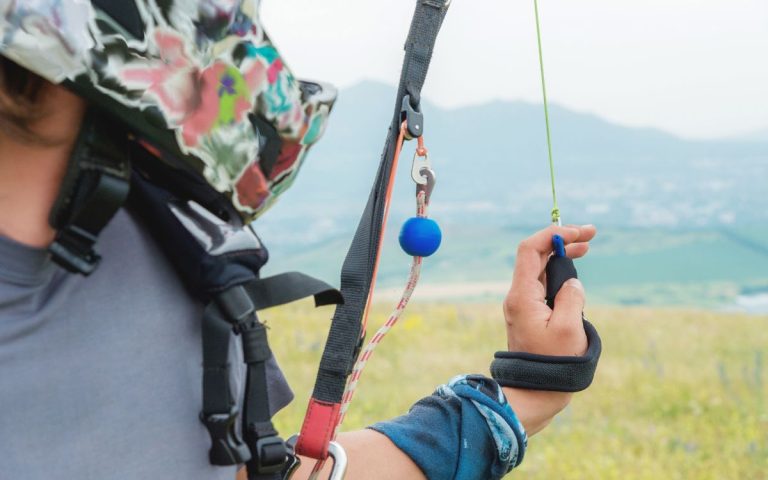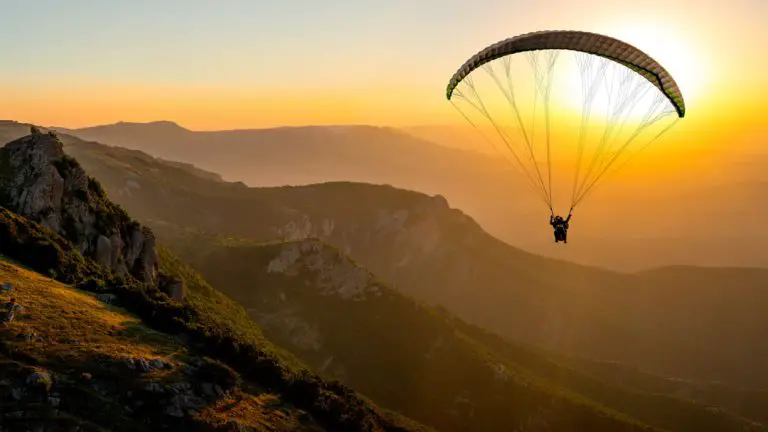What is paragliding?
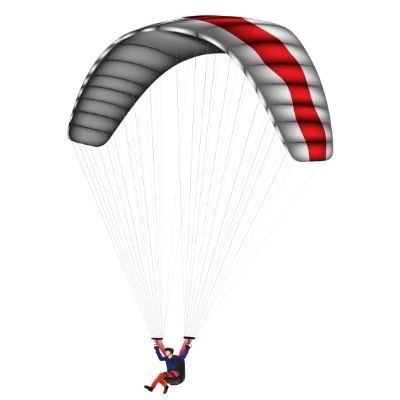
Paragliding is a recreational and competitive sport where a pilot flies using a fabric gliding wing with no rigid structure. The pilot sits in a harness suspended by several lines that attach to the wing to support the weight of the pilot and maintain the shape of the wing.
The Paraglider Wing
A Paraglider wing is generally made of light ripstop nylon material. The wing maintains its shape by the distribution of load across the wing surface by the support lines.
The wing also has an opening in the front of the airfoil that allows air to enter the structure to inflate the wing. This internal pressure is also what makes the wing maintain its shape. You can see this on the leading edge of the wing where there are holes for the entry of the air.
There are many different sizes of paragliders for many different flying weights of pilots and passengers. there are also many different levels of paragliders, from ones with high intrinsic safety rated EN-A through to gliders with much less intrinsic safety that takes much more pilot input to control such as an EN-C or EN-D class wing. These ratings tell pilots how easily the wing will recover in the event of different issues in flight such as a stall or collapse.
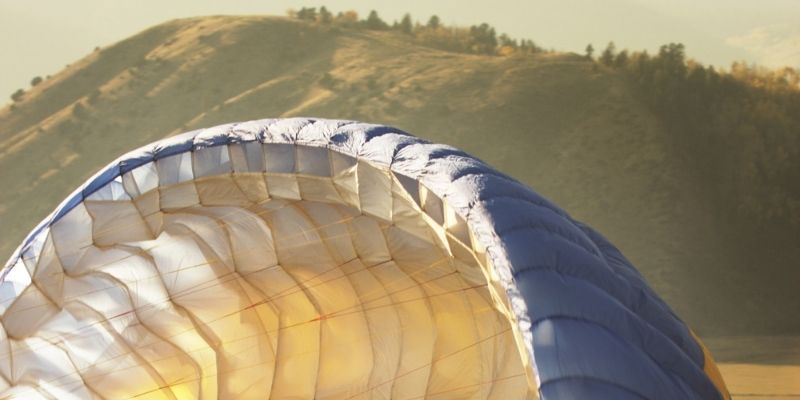
Paraglider inflation and takeoff
To take off, a pilot will unfold and lay the glider out on the ground. Depending on the wind and the type of launch the pilot wishes to perform they will then inflate the wing and increase their speed over the ground. This increases the airspeed over the wing until the paraglider is producing enough lift to leave the ground.
Takeoff is very important for a paraglider and several checks must take place both before and during the takeoff.

Pre-flight checks for a paraglider
- Remove the wing and harness from the carry bag.
- Check the reserve parachute is packed properly and ready for use.
- Unfold the glider and harness
- Check for any twists or knots in the support and control lines
- Optional – inflate the glider while facing it to check the glider is ready for flight.
- Pull forward to inflate the glider and get the wing above the pilot ready for takeoff.
- Final check of the wing while it is above the pilot
- Accelerate forward to increase lift for takeoff
- Takeoff
Flying a Paraglider
Once a paraglider is safely in the air they now have to manage the wing in flight. As paraglider wings are soft fabric and not rigid they need to be monitored constantly to ensure that the wing is flying well and does not suffer a collapse. Small collapses are common and not usually an issue as long as the pilot is trained and knows how to re-open the wing.
Controls
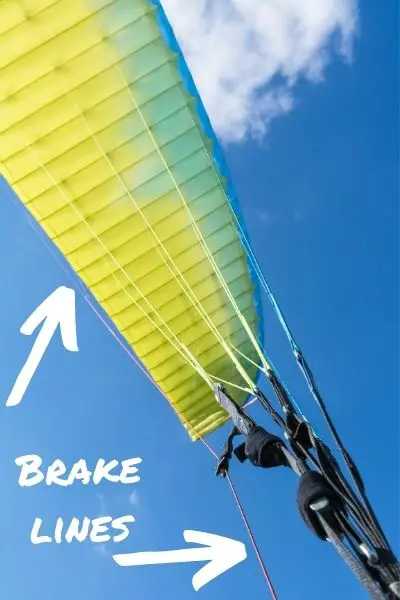
Paragliders have very simple controls but they are used in a number of different ways to control the movement of the wing. There are two primary methods of controlling a paraglider wing.
The first control is weight shift. The pilot actively moves their weight from one side of the harness to the other to cause the wing to roll. This can be used to make a turn or to control the wing in the case of turbulence or a collapse.
The second, but primary control is the breaks. These are lines that attach to the entire back edge of the paraglider wing.
There is one for the left and one for the right. These lines run directly down to the pilot and have two handles that allow control of the wing.
The brakes can be used independently of each other to cause the wing to turn in the direction of the brake that is pulled. This happens because the break increases the drag on that side of the wing slowing it down, causing a turn.
The other is to use the breaks together, this will slow down the wing or speed it up if the breaks are released. This is used for pitch control of the glider.
There is a third control called the speed bar. This is used to pull down the front edge of the glider to allow it to fly faster. the speed bar is not a control that beginners use but is very useful for adjusting the flying speed of the glider when traveling long distances.
Flying longer – Thermals
Like other unpowered flying vehicles like sailplanes and hang gliders, paragliders are required to find updrafts of air to stay in the air. For flights more than a few minutes depending on the height of the takeoff will require finding and riding in a column of rising warm air, a “thermal”. Finding and getting the most out of a thermal is an art form and takes many years to master.
Competitions and long-distance flight
On October 13, 2016, three Brazillian paraglider pilots made a world record flight of 564.3 km in their country. they were flying for some 11 hours to be able to set this record. undoubtedly amazing distance records like this will continue to be set as time goes on but it just goes to show the passion some pilots have for this sport.
There are also many competitions run all around the world, some smaller ones from local clubs, up to large international competitions like the Red Bull X-Alps.
Due to the easiness of entry into paragliding compared to other forms of flying it is just getting more and more popular.
Landing a Paraglider
Landing a paraglider is not that different from any other type of glider. The pilot must make an approach with enough altitude to be able to get to the landing site as he has no way to fly further unless he can climb in a thermal.
Due to the high maneuverability of a paraglider and the relatively low-speed approaches will usually take place very close to and in higher winds almost directly above the landing zone. In some cases, pilots have been seen to descend to the landing zone straight down due to the wind at the landing zone.
Due to the fact that paragliders are a soft canopy and have a higher danger of collapse an approach should be performed at full speed to retain lift and energy in the case of encountering turbulence on the landing that can be very dangerous when so close to the ground.
Conclusion
Paragliding is a world-renowned sport that has hundreds of thousands of people that take part every year. It is a challenge like any other adventure sport and comes with its share of risks and dangers. But it is also a unique one, that brings you in touch with nature and the world in a way that many other sports can’t.

